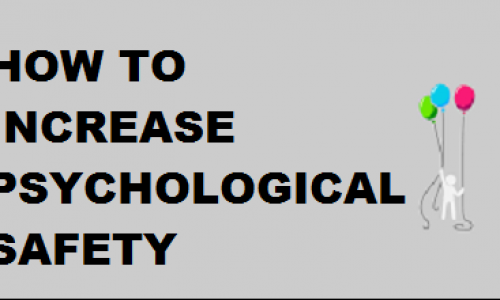When the workplace feels challenging but not threatening, teams can sustain the broaden-and-build mode.
Oxytocin levels in our brains rise, eliciting trust and trust-making behavior. This is a huge factor in team success.
So how can you increase psychological safety on your own team?
Here are a few tips by Paul Santagata, Head of Industry at Google, that will come in handy in achieving this.
* Approach conflict as a collaborator, not an adversary. A perceived loss triggers attempts to reestablish fairness through competition, criticism, or disengagement, which is a form of workplace-learned helplessness. When conflicts come up, Santagata avoids triggering a fight-or-flight reaction by asking, 'How could we achieve a mutually desirable outcome?'
* Speak human to human. Underlying every team’s who-did-what confrontation are universal needs such as respect, competence, social status, and autonomy. Even in the most contentious negotiations, remember that the other party is just like them and aims to walk away happy.
So how can you increase psychological safety on your own team?
Here are a few tips by Paul Santagata, Head of Industry at Google, that will come in handy in achieving this.
* Approach conflict as a collaborator, not an adversary. A perceived loss triggers attempts to reestablish fairness through competition, criticism, or disengagement, which is a form of workplace-learned helplessness. When conflicts come up, Santagata avoids triggering a fight-or-flight reaction by asking, 'How could we achieve a mutually desirable outcome?'
* Speak human to human. Underlying every team’s who-did-what confrontation are universal needs such as respect, competence, social status, and autonomy. Even in the most contentious negotiations, remember that the other party is just like them and aims to walk away happy.
* Anticipate reactions and plan countermoves. 'Thinking through in advance how your audience will react to your messaging helps ensure your content will be heard, versus your audience hearing an attack on their identity or ego,' explains Santagata.
Skillfully confront difficult conversations head-on by preparing for likely reactions.
Skillfully confront difficult conversations head-on by preparing for likely reactions.
* Replace blame with curiosity. If team members sense that you are trying to blame them for something, you become their saber-toothed tiger. The alternative to blame is curiosity. If you believe you already know what the other person is thinking, then you are not ready to have a conversation. Instead, adopt a learning mindset, knowing you don’t have all the facts.
State the problematic behavior or outcome as an observation, and use factual, neutral language. Engage them in an exploration and ask for solutions. The people who are responsible for creating a problem often hold the keys to solving it.
5. Ask for feedback on delivery. Asking for feedback on how you delivered your message disarms your opponent, illuminates blind spots in communication skills, and models fallibility, which increases trust in leaders.
6. Measure psychological safety. Santagata periodically asks his team how safe they feel and what could enhance their feeling of safety.
If you create this sense of psychological safety on your own team starting now, you can expect to see higher levels of engagement, increased motivation to tackle difficult problems, more learning and development opportunities, and better performance.
Courtesy: www.hbr.org



